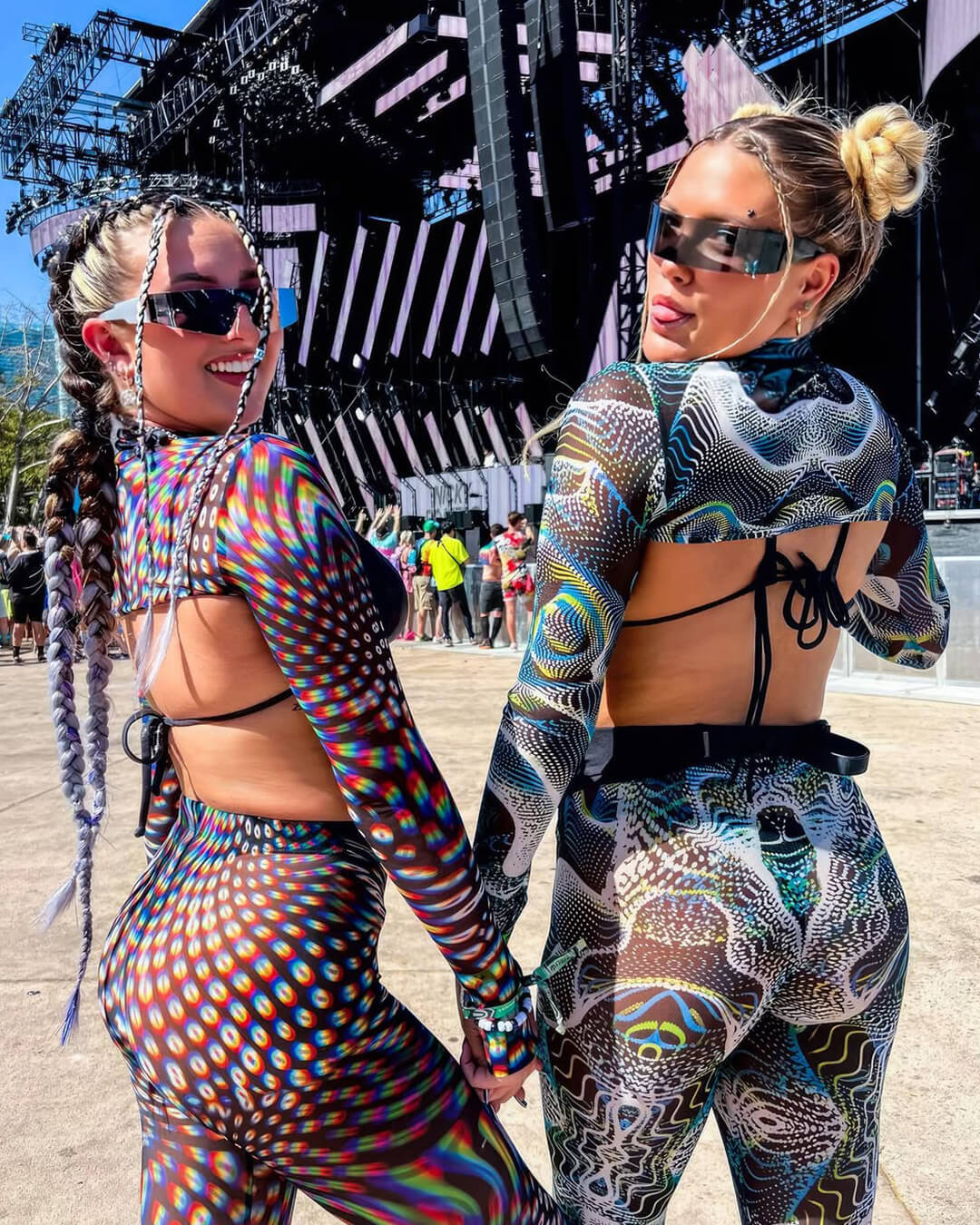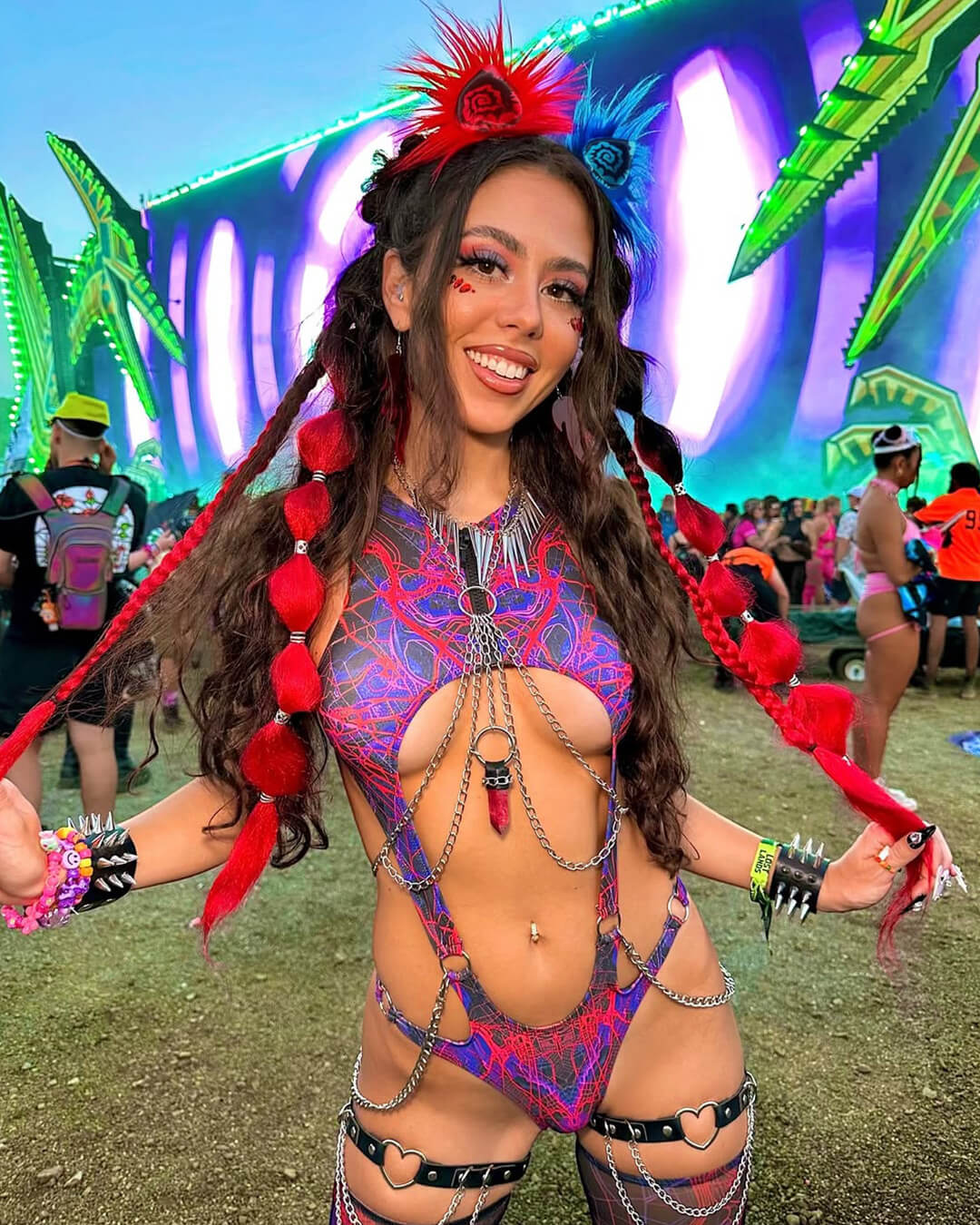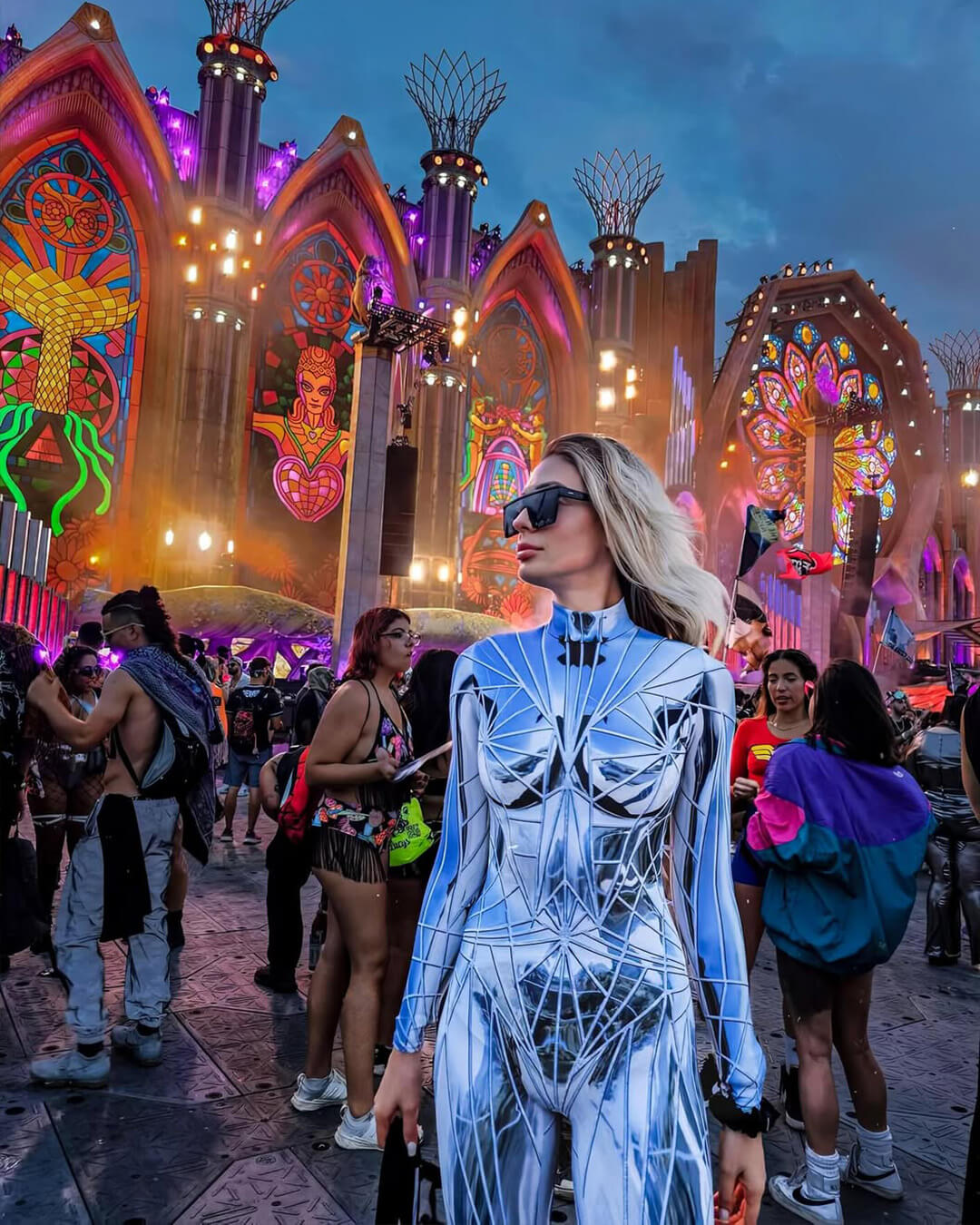What is a Rave: All You Need to Know

Let’s get to the topic…what is a Rave?
Raves are immersive dance parties that originated in the 1980s, characterized by electronic dance music (EDM), vibrant light displays, and a culture of unity and self-expression.
Typically held in venues like warehouses, clubs or open fields, raves have evolved from underground gatherings to mainstream events, influencing music, fashion, and youth culture globally.
The History of Raves and Rave Parties
Before we jump into raving, we better get back to the past and share some history.
Early Beginnings in the 1980s
The rave movement began in the early 1980s, with roots in Chicago's house music scene and Detroit's techno landscape. These genres laid the foundation for electronic dance music, with DJs experimenting with synthesized sounds and repetitive beats to create a hypnotic atmosphere.
In the United Kingdom, the acid house movement gained momentum, leading to clandestine dance parties in warehouses and open fields. These events were often organized secretly to evade authorities, as they operated without official permits.
The term "rave" itself was used to describe these energetic gatherings, where attendees danced through the night to pulsating beats.
The Rise in the 1990s
The 1990s saw raves transition from underground events to more prominent cultural phenomena. The Second Summer of Love in 1988 and 1989 in the UK marked a significant period when rave culture exploded, with large-scale events attracting thousands.
Genres like drum and bass, trance, and hardcore techno music emerged, diversifying the rave music landscape. Despite facing legal challenges, such as the UK’s Criminal Justice and Public Order Act of 1994, which aimed to curb unlicensed gatherings, rave culture persisted.
In fact, it also adapted, moving to licensed values or more remote locations to continue the tradition.
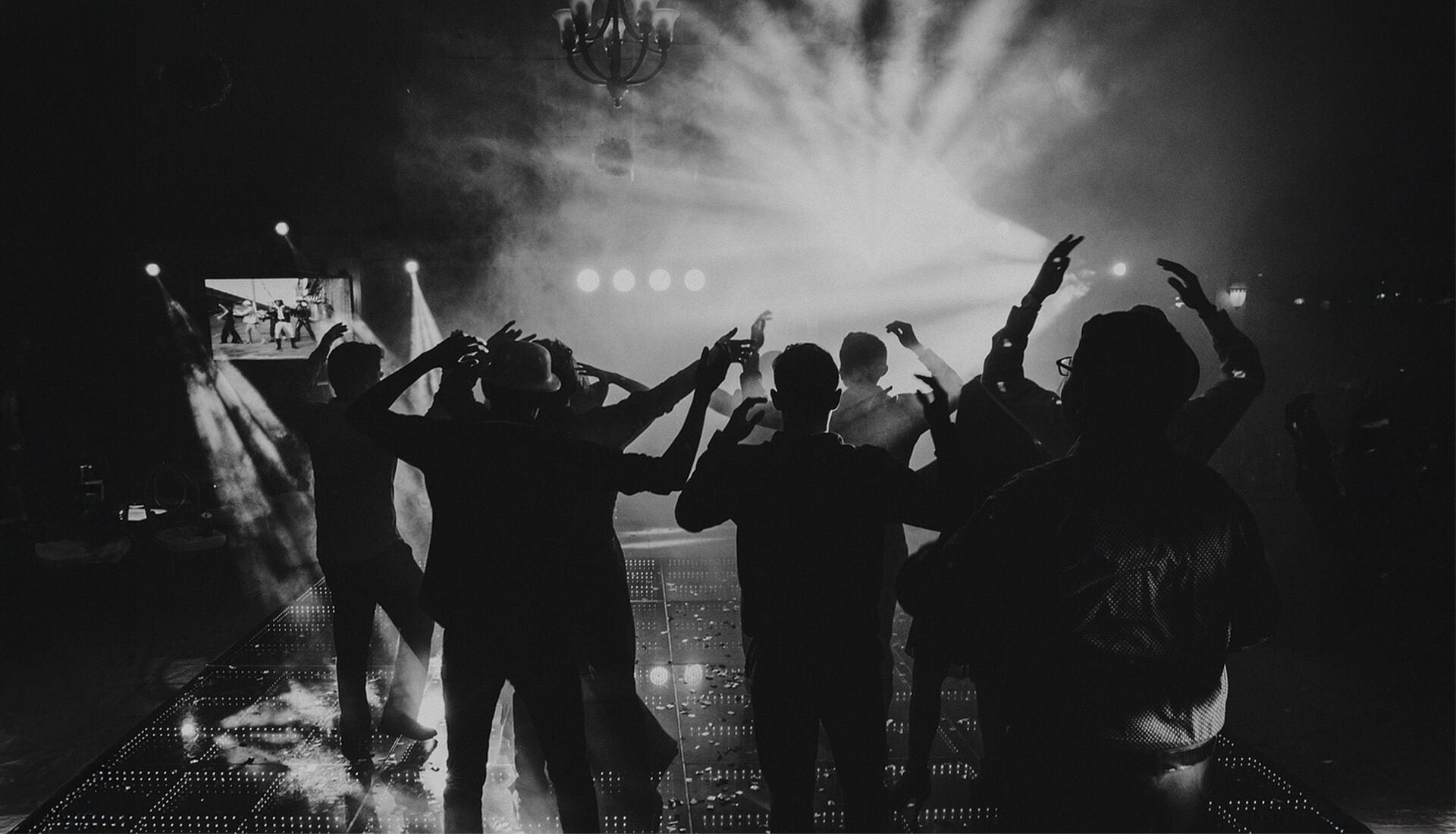
Modern-Day Raves
Today, raves have become global events, ranging from intimate underground parties to massive festivals attended by tens of thousands.
Music festivals like Tomorrowland in Belgium, Burning Man in Nevada’s Black Rock Desert, and Electric Daisy Carnival in the USA exemplify the mainstream appeal of rave culture.
While the core elements of electronic dance music and immersive experiences remain, modern raves often incorporate advanced technology. Raves nowadays also elaborate on stage designs, implement diverse musical acts and reflect the evolution of the scene.
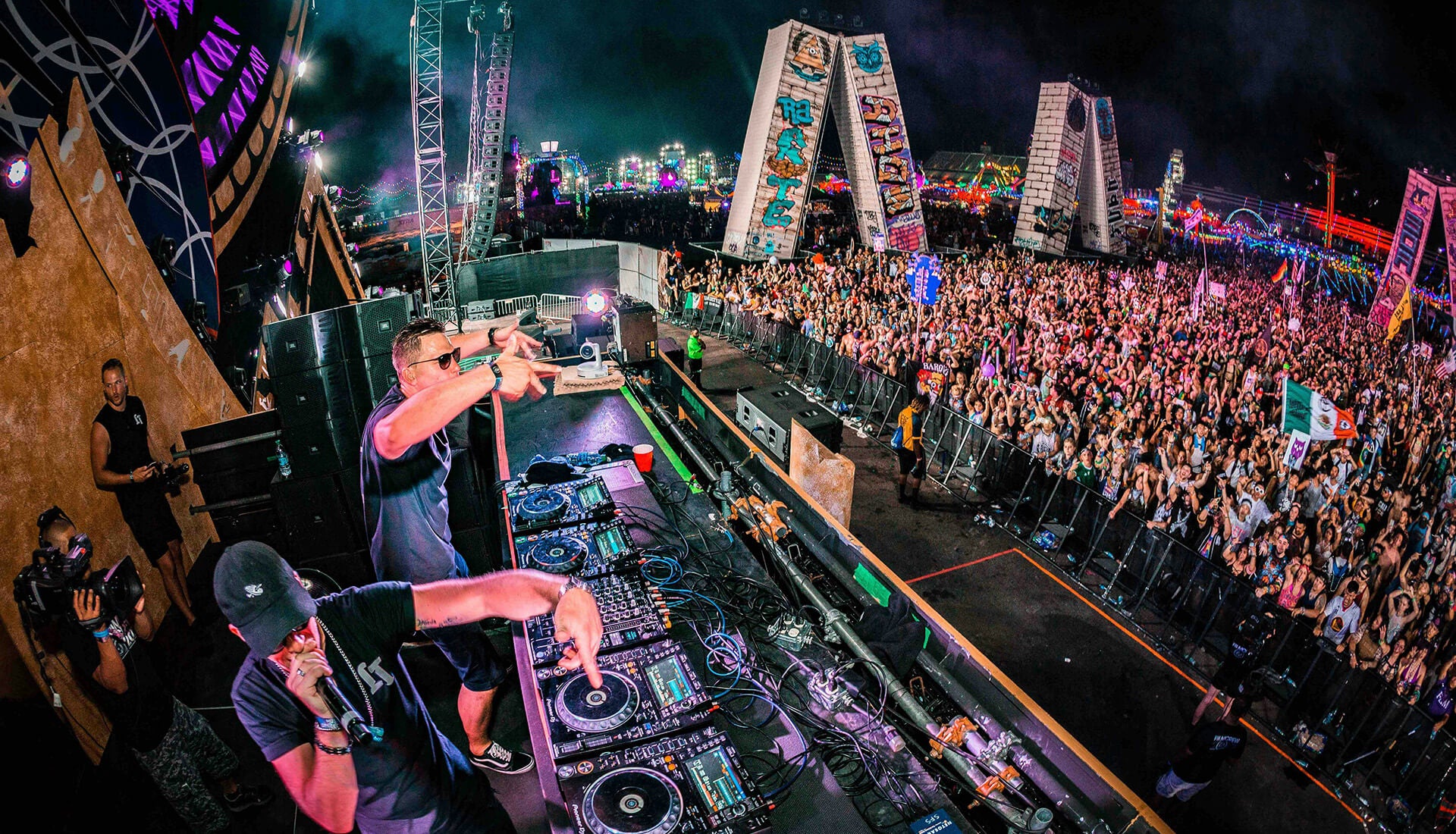
Rave Culture Explained
Want to know more about rave culture? Then you are in the right place and we are about to get in detail and cover all the specifics of rave culture to its core.
Music: The Heart of the Rave
At the core of rave culture is the music, primarily electronic dance music. The genre is characterized by synthesized sounds, repetitive rhythms and a tempo that encourages continuous dancing.
The music is designed to create an immersive experience, often accompanied by visual effects like light shows and projections to enhance the sensory environment.
Rave music encompasses various subgenres, each contributing to the diversity of the scene:
- Techno - Originating in Detroit in the 1980s, techno is characterized by a repetitive four-on-the-floor beat and synthesized melodies.
- House - Emerging from Chicago, house music features a steady 4/4 beat, soulful vocals, and funk-infused basslines.
- Drum and Bass - Developed in the UK, this genre is known for its fast breakbeats and heavy basslines, creating an energetic atmosphere.
- Trance - Known for its melodic and hypnotic qualities, trance music aims to induce a state of euphoria among listeners.
You see - there is something for every vibe and music taste when it comes to raving.
Iconic DJs and Their Influence
DJs play a pivotal role in shaping rave culture, acting as both performers and curators of the musical journey. Figures like Carl Cox, known for his dynamic techno sets, and Tiesto, a pioneer in bringing trance to mainstream audiences, have been instrumental in rave music.
Their ability to read the crowd and create an immersive experience has solidified their status as icons within the community.
Dance and Movement
Dancing is a fundamental aspect of raves, serving as a form of expression and connection among attendees. The continuous, rhythmic movements foster a sense of unity and collective euphoria.
Various dance styles have emerged within rave culture:
- Shuffling - a fast-paced footwork style involving quick heel-and-toe movements, often associated with house and hardstyle music.
- Liquid Dancing - characterized by smooth, flowing hand movements that create the illusion of fluidity, commonly performed to trance and drum and bass.
- Jumpstyle - originating from Europe, this style involves coordinated jumping movements, typically performed to hardstyle music.
Hey, this does not mean that you need to adapt to one of those dance styles! The opposite - you can be who you are and enjoy the dance styles you want to enjoy.
Dance serves as a medium for self-expression and a way to connect with the music and fellow attendees. The communal aspect of dancing fosters a sense of belonging and shared experience, which is central to the ethos of rave culture.
Typical Rave Attire
Fashion at raves is a vibrant display of individuality and creativity.
Common elements of rave fashion include:
- Neon Colors - Bright hues that stand out under blacklights.
- Reflective Materials - Clothing that catches and reflects light, enhancing the visual experience.
- Comfortable Footwear - Sneakers or dance-friendly shoes to accommodate hours of movement.
- Accessories - Items like bead bracelets (often referred to as "Kandi"), LED gloves, and face paint add to the expressive ensemble.
Of course, when it comes to rave outfits, it is all about expressing who you really are in the best possible way. So, make sure you wear whatever makes you feel confident and comfortable.
Accessories often carry symbolic meanings within the community. For instance, "Kandi" bracelets are frequently exchanged as tokens of friendship, embodying the PLUR philosophy - Peace, Love, Unity, Respect - that underpins rave culture.
What to Expect at a Rave
Wondering how it feels to attend a rave? We are about to get in detail and share with you what to expect at a rave…
The Vibe: Energy and Atmosphere
Raves are renowned for their electrifying energy, where the synergy between pulsating beats, dynamic light shows and the collective enthusiasm of attendees creates an unparalleled atmosphere.
The vibe is described as euphoric with a palpable sense of unity and freedom permeating the space.
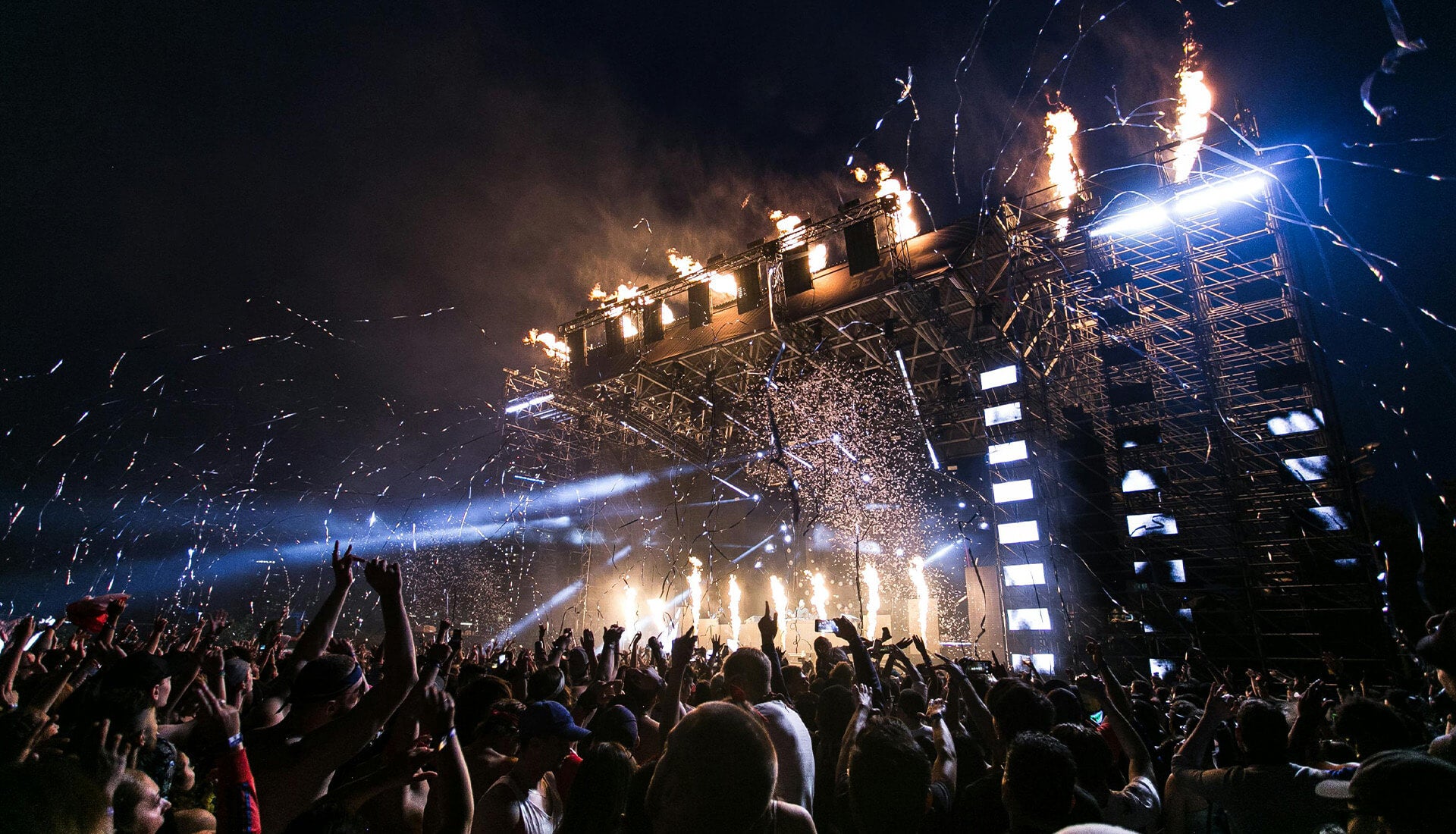
Indoor vs. Outdoor Raves
Raves can be hosted in a variety of settings, each offering a distinct experience:
- Indoor Raves - typically held in large clubs, warehouses, or other enclosed spaces, indoor raves provide controlled environments where lighting and acoustics can be meticulously managed. The intimacy of these venues often enhances the intensity of the experience.
- Outdoor Raves - Set in open fields, forests, or beaches, outdoor raves offer a more liberating experience, with nature as a backdrop. These events can range from small gatherings to large festivals hosting tens of thousands of attendees.
Which one to attend? It is all up to you, so make sure you attend the rave that fits you mostly.
Festival vs. Club Raves
The scale and structure of raves can vary:
- Club Raves - Usually smaller in scale, these events are held in nightclubs or similar venues, featuring local or touring DJs. The setting allows for a more intimate connection between the DJ and the audience.
- Festival Raves - These are expansive events, often spanning multiple days, with numerous stages showcasing a variety of artists. Festivals like Tomorrowland and Electric Daisy Carnival exemplify large-scale raves, offering immersive experiences with elaborate stage designs and diverse lineups.
We have to note - it does not matter if the rave is a festival or club - it is always worth the hype!
Visuals and Effects
A hallmark of rave culture is the integration of stunning visuals and effects that complement the music:
- Light Shows - advanced lightning setups, including lasers, strobes and LED displays, synchronize the music to create a multisensory experience.
- Visual Art Installations - many raves incorporate art installations, such as sculptures or interactive displays, adding a creative dimension to the event.
The effects and installations usually serve as focal points within the revenue, offering attendees spaces to explore and engage.
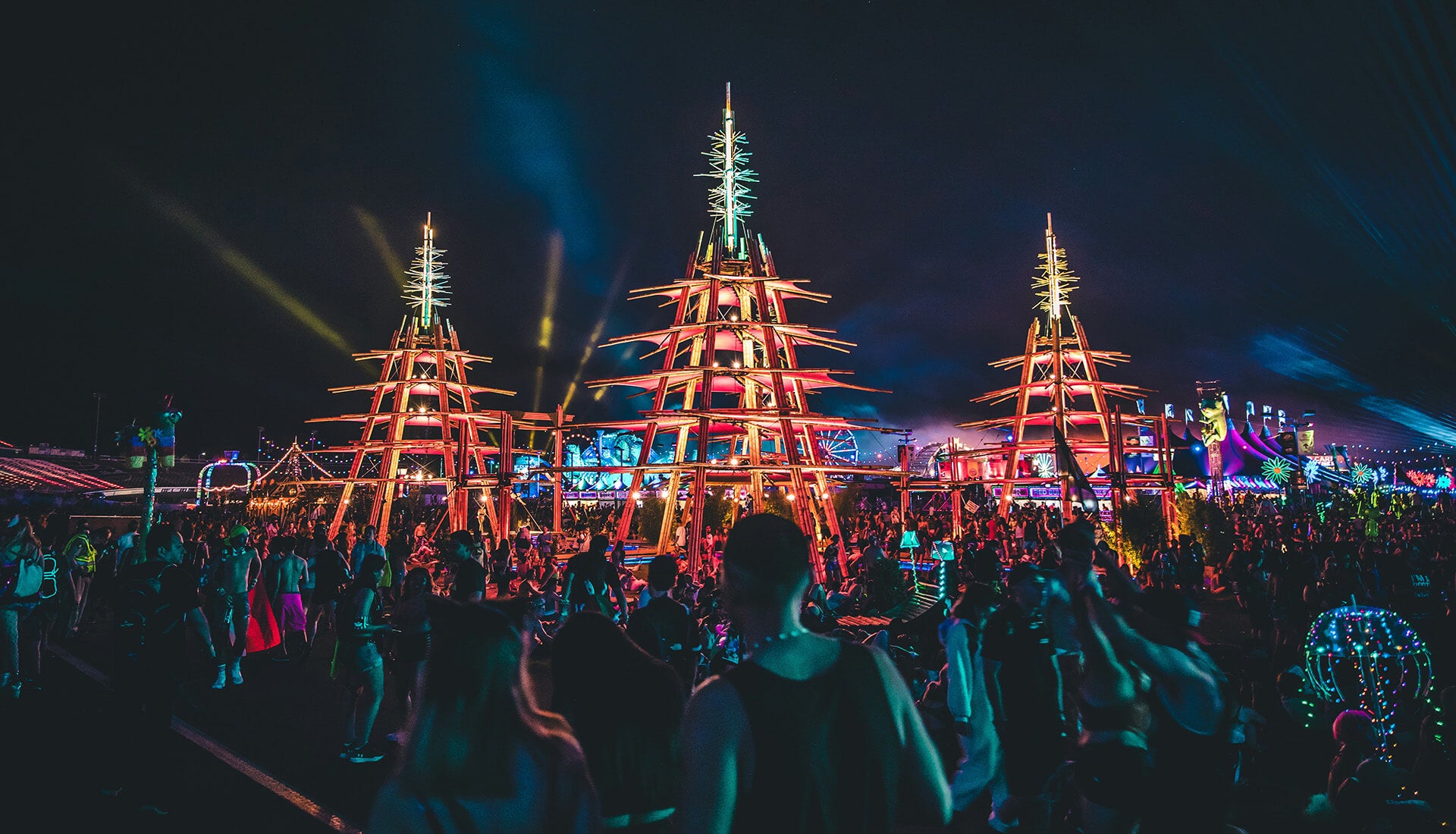
Activities and Performances
Beyond dancing, raves often feature a variety of performances and activities:
- Live DJ Sets - The core of any rave, DJs perform live, mixing tracks to create continuous sets that keep the energy flowing. The spontaneity and skill of the DJ play a crucial role in shaping the night's experience.
- Performance Art - Elements such as fire dancing, acrobatics, or live painting are sometimes incorporated, adding layers of entertainment and artistic expression to the event. These performances enhance the immersive nature of raves, offering attendees a feast for the senses.
So, are you ready to have fun? At raves, you will surely find the right activity for your vibe.
Rave Etiquette For Beginners
Participating in a rave involves understanding and respecting the unspoken codes that maintain the event's harmonious and inclusive atmosphere.
How to Be a Respectful Raver
Well, it’s not difficult, all you need to do is to follow these simple rules:
- Respect personal space - while raves are communal experiences, it’s essential to be mindful of others’ boundaries. Avoid intrusive behavior and be aware of your surroundings.
- Consent is key - always seek explicit consent before initiating physical contact or taking photos of others.
- Clean up after yourself - dispose of trash properly and respect the venue whether it’s an indoor space or an outdoor setting.
This is all you need to do to be a respectful raver. Not too difficult, right?
Social Norms and Expectations
Rave culture thrives on principles that promote a positive and inclusive environment:
- Inclusivity - Raves are spaces where diversity is celebrated. Embrace the variety of people and expressions present.
- Positivity - Maintain a positive attitude, contribute to the collective energy, and support fellow attendees.
- Non-Judgment - Approach the experience with an open mind, free from judgment of others' appearances or behaviors.
Of course, you should be who you really are. Pack your positivity, do not judge and have fun!
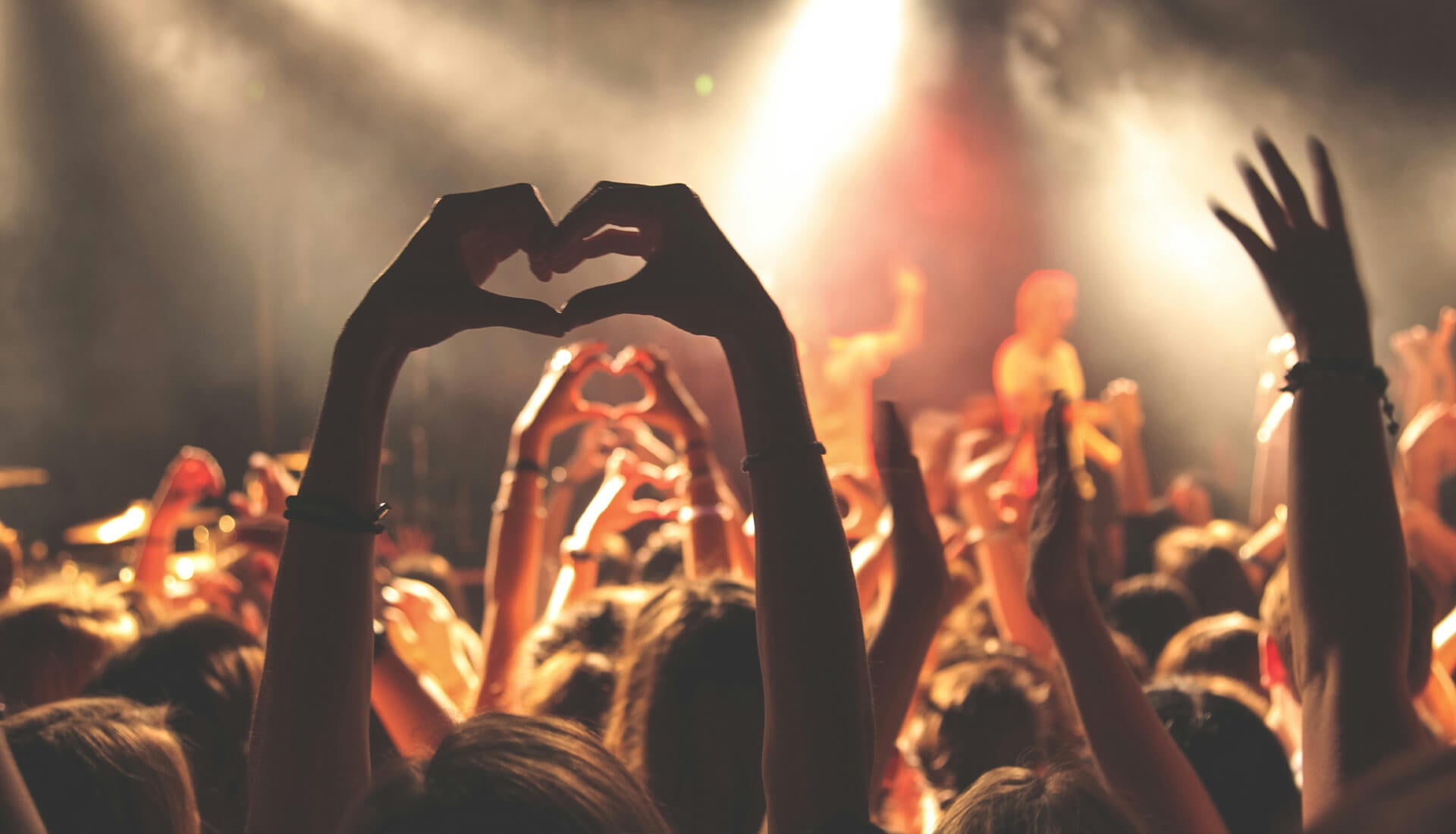
The PLUR Philosophy: Peace, Love, Unity, Respect
Central to rave culture is the PLUR philosophy:
- Peace - Fostering a non-violent environment where conflicts are minimized.
- Love - Sharing kindness and affection with others.
- Unity - Embracing a sense of togetherness and community.
- Respect - Honoring each individual's personal space and choices.
This ethos encourages a supportive and harmonious atmosphere, enhancing the collective experience.
First-Time Raver Tips
To fully prepare for your first rave, follow these steps:
- Research the event - understand the venue, lineup and any specific guidelines or themes.
- Plan your transportation - ensure you have a safe and reliable way to get to and from the event.
- Stay informed - follow official channels for updates or changes to the event schedule.
Also, reading such guides as this one is never a bad idea.
What to Bring
Here is a list with all the stuff you must bring to a rave:
- Identification - carry a valid ID, as many raves have age restrictions.
- Tickets - have your ticket readily accessible, whether digital or printed.
- Hydration - bring a refillable water bottle to stay hydrated throughout the event.
- Ear Protection - consider earplugs to protect your hearing from prolonged exposure to loud music.
- Comfortable Clothing - dress in attire that allows for free movement and comfort.
- Cash/Card - for purchasing food, drinks, or merchandise.
Of course, there are many more things you better bring, still, this list covers all the essentials for the most common venues.
Safety Tips for Raves
Raving is all about losing yourself in the music, the lights and the collective energy. However, that does not mean you should lose sight of your safety.
The best rave experience is one where you can dance all night and make it to sunrise feeling amazing. Not the one that leaves you dehydrated, lost or overwhelmed.
Here is how to stay safe while embracing the rave culture:
- Hydration and Health: Raves are a high-energy environment where you are moving constantly under flashing lights and loud music. So - make sure you are hydrated. Keeping your body in check ensures you can last the night without burning out.
- Managing Physical Exhaustion: Jumping non-stop to drum n bass, shuffling to house music or getting lost in trance can wear your body out quickly. Take breaks when needed, find a chill spot, breathe, and let your body recover.
- Staying with Friends: Raves are massive and chaotic, and while meeting new people is part of the fun, getting separated from your group can turn a dream night into a stressful one. Always stick with at least one friend, so you have someone to watch your back and share the experience with.
- Buddy System: Whether you are hitting an underground warehouse rave or a large festival, having a buddy system is a must. Choose someone in your group to check in with every hour or so, and make sure you both look out for each other’s well-being throughout the night.
- Communication Plans: In many raves, cell service is unreliable or completely non-existent. Before you dive into the rave scene, set a meeting spot in case you get lost, and agree on a backup plan for regrouping if someone goes missing.
Raves are incredible, but let’s be real - they can come with risks. Club drugs like ecstasy and MDMA are common, and drug use can lead to overheating, dehydration, or worse. If you choose to partake, know your limits, stay informed, and never accept anything from strangers.
Most large clubs and rave venues have medical tents, security, and staff trained to help in emergencies. If you or someone near you is in trouble - whether from exhaustion, dehydration, or a bad reaction - don’t hesitate to seek help.
Current Trends in the Rave Scene
The rave scene is constantly evolving, embracing new technology, sustainability efforts, and digital experiences that push the culture forward. Raving isn’t just about sweaty warehouses and neon lights anymore - it’s a global movement adapting to the digital age.
With the rise of live-streamed EDM events and VR raves in recent years, many ravers can now experience the party atmosphere from their own home. Platforms like Twitch, YouTube and metaverse host virtual raves, letting young people have real fun.
As large festivals attract tens of thousands, the environmental impact has become a serious issue. Many raves are now focusing on sustainable practices such as recyclable cups and solar-powered stages. The party can keep going without harming the planet.
All in all, the future of raves is high-tech. From AI-powered light shows to augmented reality experiences that blend digital art with real-world dancing, technology is making rave culture more immersive than ever.
Expect to see more holograms, interactive visuals, and next-level DJ performances in the rave scene of the future.
Conclusion
So, what is a rave? It’s more than just loud music, flashing lights, and non-stop dancing - it's a global culture that has thrived for decades and continues to evolve.
From Chicago house music and underground acid house parties to today’s massive EDM events, the rave scene has never stopped growing.
What makes raves truly special isn’t just the pulsating beats, wild fashion, or stunning visuals - it’s the sense of unity.
Whether you’re at an abandoned warehouse rave, a mega-festival, or even a VR party, the feeling is the same: freedom, connection, and an escape into music like no other.
As rave attendance increases in popularity, it keeps pushing boundaries - bigger events, new technology, and an ever-growing community of ravers. Whether you’re a first-timer or a veteran, one thing’s for sure - raving is here to stay.

